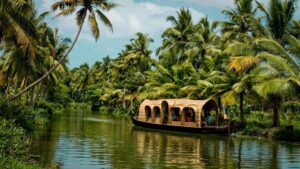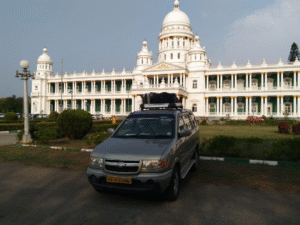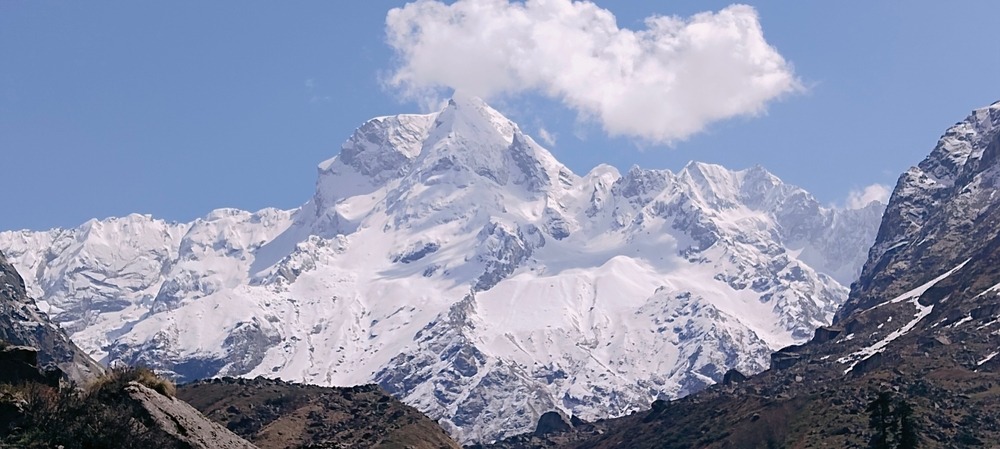
Introduction to the Har Ki Dun Trek
Why I Think Har Ki Dun Is a Must-Do Himalayan Trek
Let me take you back to the moment I decided to do the Har Ki Dun trek. I was searching for something more than just another Himalayan trail—something serene, rich in stories, and less commercialized. And trust me, Har Ki Dun hit all the right chords.
I entered a cradle-shaped valley nestled deep within the Western Garhwal Himalayas during this walk. Locally called the “Valley of the Gods,” this route is steeped in mythology—it’s believed that the Pandavas took this path on their final journey to heaven. From the get-go, I could feel the spirituality in the air.
As I hiked through pine forests, crossed ancient wooden bridges, and wandered past centuries-old villages like Osla, it felt like I’d stepped into a time capsule. I vividly remember the sound of the Tons River rushing beside me, and the way sunlight streamed through thick forest canopies, casting golden hues on the mossy ground. Har Ki Dun’s elevation tops at around 11,700 ft, offering surreal views of peaks like Swargarohini, Hata, and Jaundhar Glacier.
If you’re someone who seeks solitude, history, and nature rolled into one, this trek will feel like a personal epiphany.
Why Having a Local Guide Made All the Difference
Now, let me tell you something that made this trek extra special—my local guide. You might think you can manage without one, but I strongly believe that going with someone from the region elevates the experience.
My guide was born in a nearby village and knew the trail like the back of his hand. He wasn’t just there to lead the way—he told me stories about ancient customs, pointed out plants used in local medicine, and shared legends that gave the landscape meaning. One time, he stopped near a mossy stone and told me it was used as a rest stop by wandering saints decades ago.
On a practical note, the guide helped with trail navigation, food arrangements, safety tips, and even made sure we trekked responsibly—no littering, respecting the local ways, and being aware of our surroundings. Having someone grounded in the land gave me a deeper connection to the place.
How I Reached the Base Village – Sankri
Getting to Sankri from Dehradun
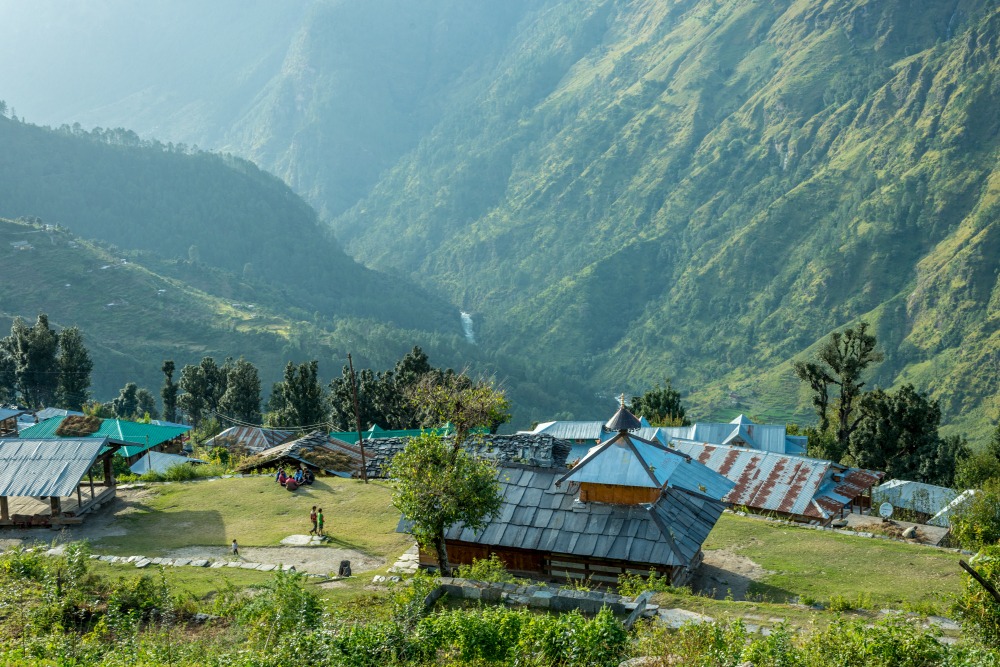
Starting this journey required getting to Sankri—a charming little village around 200 km from Dehradun. I kicked off early from Dehradun in a shared jeep that I’d pre-booked. The drive was an experience on its own: winding roads, Himalayan pine forests, and rivers weaving through valleys.
It took us around 9 hours with some scenic stops at Mori and Purola. These roadside tea breaks were lifesavers—not just for the chai, but also for stretching our legs and chatting with fellow trekkers. If you’re up for a smoother ride, you can book a private cab from Dehradun, but I personally loved the camaraderie and storytelling that came with sharing a ride.
The road gets bumpier after Purola, but the views? Absolutely worth every jolt. The last stretch feels like entering another world—wooden houses, flocks of sheep, terraced farms, and kids waving at passing vehicles.
Where I Stayed in Sankri
When I reached Sankri, it felt like I’d stepped into a storybook village. Wooden lodges with slanted tin roofs, friendly faces, and fresh mountain air welcomed me. I stayed at a guesthouse called Swargarohini Inn, and it was perfect—cozy beds, hot meals, and killer views of snow-clad peaks.
The evening before the trek, I met my guide and the rest of the group. We sat around sipping herbal tea as he briefed us on the route, altitude, what to expect, and the gear checklist. I appreciated that he also made sure our paperwork and permits were sorted in advance—another perk of going with a local.
When I Chose to Trek Har Ki Dun and Why It Mattered
A Season-Wise Breakdown of My Options
Before I finalized my dates, I did a deep dive into seasonal benefits and challenges. Here’s what I found:
-
Summer (April to June): Perfect if you want pleasant weather and blooming rhododendrons. The meadows are lush, rivers are full, and the forests buzz with life.
-
Monsoon (July to early September): Personally, I avoided this period. The trails are slippery, and leeches can be a nightmare.
-
Autumn (Mid-September to November): My choice! Crisp weather, golden forests, and stunning visibility of the snow peaks.
-
Winter (December to March): If you dream of snow-covered trails and frozen rivers, winter is magical. But it’s also more demanding and requires good gear.
Why October Was My Ideal Choice
I chose the second week of October, and I’m so glad I did. The forests were turning golden-orange, the skies stayed crystal clear for most of the trek, and the temperature hovered between 5°C to 12°C during the day.
There was just a whisper of snow on the higher slopes, and the crispness in the air gave me the kind of mental clarity I’d been craving. No rain, no leeches, and a sky so full of stars at night, it felt like a dream. If you ask me, early October is the sweet spot.
Here’s My Day-by-Day Har Ki Dun Trek Itinerary
Day 1: Sankri Arrival (6,400 ft)
After that scenic drive from Dehradun, I reached Sankri late in the afternoon. I checked into my guesthouse, freshened up, and met my trek leader and a few other trekkers in the dining area.
We spent the evening sorting our gear, getting used to the altitude, and soaking in the village vibes. The temperature dropped quickly after sunset, so I layered up and enjoyed a quiet dinner of hot chapatis, sabzi, and dal. Honestly, it felt like home away from home.
Day 2: From Sankri to Taluka and Then Trek to Seema/Osla (8,600 ft)
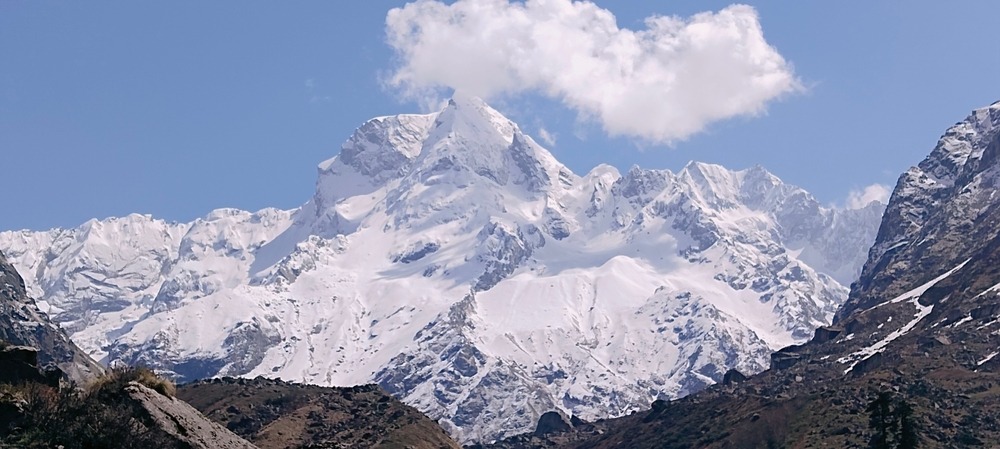
From Sankri to Taluka, the trip began with a brief 12-kilometer jeep ride.The road was narrow, wild, and beautiful—cliffs on one side and thick forest on the other. We reached Taluka in under an hour, strapped on our backpacks, and set off on foot.
The trail to Seema was gentle yet long—around 13 km, winding alongside the Supin River. We walked through dense pine and deodar forests, passed gurgling streams, and crossed rustic wooden bridges. Our guide pointed out edible leaves, local herbs, and even showed us how to spot bear claw marks on tree trunks!
We reached Seema (near Osla) by late afternoon and pitched our tents. Osla was sitting like a painting across the river. The stars that night? Unreal. I remember lying outside my tent, tracing constellations while sipping on lemon tea.
Day 3: Trekking from Seema to Har Ki Dun Valley (11,700 ft)
This was the day I’d been waiting for. After a warm breakfast and a quick gear check, we began our ascent toward the legendary Har Ki Dun valley. It’s around 11 km from Seema, but every step was a postcard moment.
The trail started gently, winding through fragrant pine forests and open meadows. As we climbed higher, the river’s sound faded and the silence of the mountains wrapped around us like a blanket. My guide would occasionally pause to share local legends—one about a hidden temple near the cliffs, another about how villagers once believed the Swargarohini peak was the stairway to heaven.
We stopped at Kalkatti Dhar for lunch. That view—snow-draped peaks in the distance, blue skies above, and pine-studded hills below—was surreal. Swargarohini loomed large and majestic. It felt like the stories from Mahabharata were unfolding before me.
The last leg of the day’s trek opened up to the stunning Har Ki Dun valley. I could hardly believe I was finally standing there. A glacial stream cut through the valley, surrounded by towering peaks and golden grasslands. We set up camp near the river, and as the sun dipped behind the mountains, the entire valley turned a warm, amber hue.
That night, wrapped in my sleeping bag under the stars, I felt both tiny and limitless.
Day 4: Exploring Har Ki Dun – A Day of Discovery
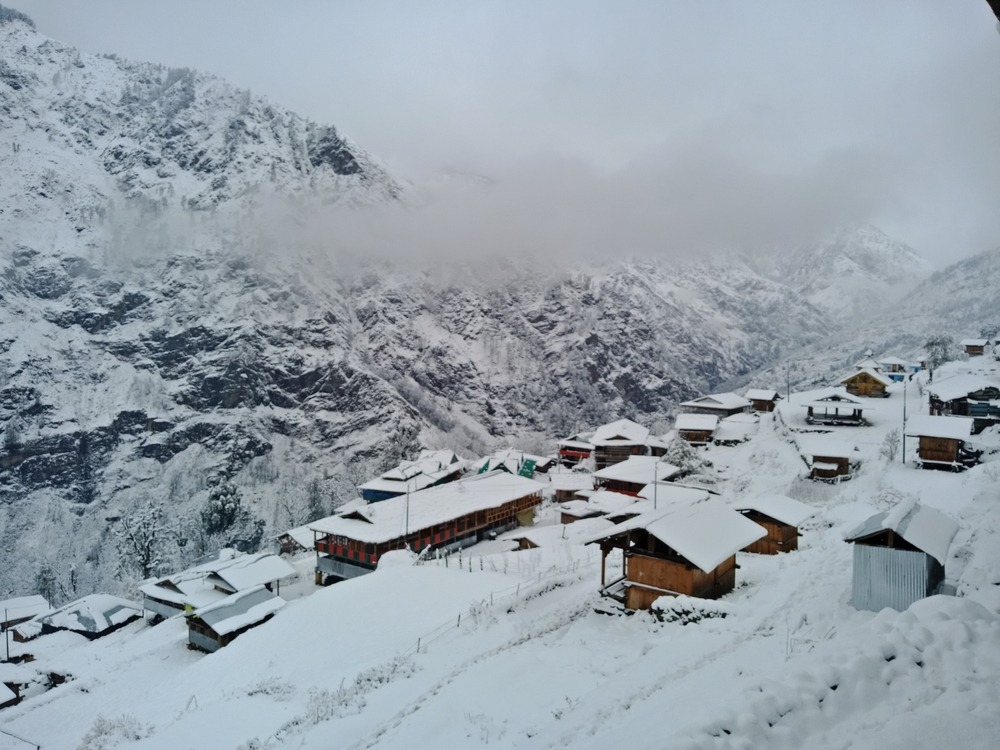
Waking up in Har Ki Dun was like opening your eyes inside a dream. Frost lined the grass, and the morning mist hovered over the stream. We had an exploration day ahead, and I was buzzing with excitement.
After breakfast, we set off toward Maninda Tal, a high-altitude glacial lake about 3 km from our camp. The trail was relatively easy but steep in patches. As we walked, our guide pointed out wild berries and the elusive Brahma Kamal flower. The lake itself was unearthly, perfectly clean and mirror-like, mirroring the surrounding peaks.
I dipped my hands into the icy water, closed my eyes, and soaked in the moment. There wasn’t a sound but the soft wind and my heartbeat. Nature had spoken—and I was listening.
Some trekkers in the group chose to hike toward Jaundhar Glacier instead, a tougher but rewarding trail. I chose to conserve energy and just wander around the valley. I met a few shepherds tending to flocks and even helped a local kid fix a broken sling. These little interactions made the day richer than any summit.
Back at camp, we had soup, shared stories around a campfire, and stared up at a sky spilling over with stars. That kind of peace is rare. And I held onto it tightly.
Day 5: Descending from Har Ki Dun to Seema
Saying goodbye to Har Ki Dun was bittersweet. After a hearty breakfast and one last look at the valley, we began our descent to Seema. Going downhill was physically easier but tough on the knees—those trekking poles were my best friends.
But the change in perspective made everything look new again. Peaks that had loomed above me on the way up now stood like old friends waving goodbye. I took more breaks on the return, savoring every view, every flower, every scent of pine and earth.
We stopped again at Kalkatti Dhar for lunch and then continued the downhill journey. Birds chirped, the river roared louder the closer we got to it, and the familiar sound of cowbells told me we were nearing civilization again.
Reaching Seema felt like returning home. My legs were tired but my heart was full. We stayed in a local homestay this time, and that evening, I got to interact more with the villagers of Osla. Their stories, their hospitality, their smiles—it was all soul food.
Day 6: From Seema to Taluka, Then Driving Back to Sankri
This was our last day of trekking. We retraced our steps back to Taluka, a 13 km walk. I was more mindful this time—less focused on reaching the destination and more on cherishing the experience. I walked slower, talked more with my guide, and took in the smallest details—the cracked bark on trees, butterflies fluttering across the trail, and kids playing near their homes.
By the time we reached Taluka, our jeep was already waiting. That bumpy ride back to Sankri was filled with laughter, tired high-fives, and photo-sharing sessions. We swapped contact details, jokes, and one too many stories from the trail.
I stayed at the same guesthouse when I returned to Sankri. It felt different this time—familiar and warm. I took a hot shower, wore fresh clothes, and sat with my guide and group for one final dinner. The trek was officially over, but the memories were just beginning to settle in.
Day 7: The Return Journey to Dehradun
The final goodbye. We left early in the morning for Dehradun, retracing that long road back through valleys and hills. But everything felt different now. I wasn’t the same person who had started this journey a week ago.
As we passed villages, rivers, and pine forests, my phone buzzed back to life, but I kept it aside. I wasn’t ready to leave the mountains behind just yet. I replayed every moment in my head—the first step from Taluka, the golden light in Har Ki Dun, the laughter in Osla.
I reached Dehradun by evening. And as I waited for my train, all I could think about was when I’d be back. Because once you’ve walked through Har Ki Dun with a local by your side, you carry a part of the valley in your soul forever.
What I Gained from Trekking with a Local Guide
Cultural Lessons and Local Legends That Moved Me
I can’t stress this enough—my guide made this trek unforgettable. He wasn’t just someone to follow; he was a storyteller, a guardian, and a bridge to the culture and wisdom of these mountains.
He introduced me to locals in Osla who welcomed me like family. One evening, I sat in a villager’s home sipping salty butter tea while they narrated the legend of Duryodhana’s temple. In most of India, Duryodhana is a villain, but here, he’s revered. Their stories challenged my beliefs and expanded my worldview.
I learned how they farm buckwheat and rajma on terraced hillsides, how they survive the brutal winters, and how deeply they respect nature. These weren’t facts from a guidebook—they were shared with emotion, with pride, and with heart. Shoutout to The Searching Souls—the team behind my incredible Har Ki Dun Trek experience. If you’re heading that way, give them a call. You won’t regret it.
Feeling Safe and Prepared in Every Situation
Trekking in the Himalayas is no joke. Weather changes in minutes, and paths vanish under snow or rock. More than once, our trail turned muddy from overnight rain, but my guide always knew how to navigate through safer detours.
He carried a first-aid kit, kept checking in on our energy levels, and made sure we never rushed. When one of us felt a bit dizzy at altitude, he recognized the signs instantly and made adjustments to let her acclimate.
That peace of mind? Priceless.
Trekking Responsibly—The Local Way
What really struck me was how deeply connected my guide was to the land. He didn’t just preach eco-friendliness—he lived it.
He’d pick up plastic wrappers left by careless trekkers, discourage washing near streams, and always insisted we carry our own reusable bottles and waste bags. He even showed me how to identify natural herbs used by villagers to treat minor ailments.
That kind of real-world education doesn’t come from brochures—it comes from walking beside someone who truly belongs to the mountains.
Where I Slept and What I Ate Along the Way
Staying in Tents and Homestays—Each Night a New Memory
In Sankri and Seema, I stayed in traditional wooden guesthouses and homestays. These weren’t luxury accommodations, but they were warm, clean, and full of character. Wood-smoke from the kitchen mingled with mountain air, and the beds were always stacked with thick quilts to fight the nighttime chill.
Higher up, we shifted to tents. At Har Ki Dun, we camped on a soft meadow beside a gurgling stream. The tents were spacious, and our sleeping bags were warm enough to handle the freezing nights.
Waking up to sunrise on snow-capped peaks, unzipping the tent flap and stepping into a dream—that’s the kind of “five-star” I’ll take any day.
Hot Meals, Local Flavors, and That One Perfect Cup of Tea
Meals on the trek were simple but deeply satisfying. Our guide’s cook prepared fresh food every day—hot aloo-parathas for breakfast, packed lunches with boiled eggs and poha, and dinners of dal, rice, and sabzi.
My favorite moment? Sipping steaming chai while watching dusk fall over the mountains. I also got to taste some unique dishes like “madua roti” (finger millet bread) and locally foraged greens. Eating food that was cooked with love, over firewood, under the stars—it added a whole new flavor to the adventure.
What I Packed and What I Wished I’d Brought
Everything I Carried in My Backpack
I had prepared for weeks, but being there taught me what I really needed. Here’s what made it into my pack:
-
A sturdy backpack (60L) with rain cover
-
Layered clothing: 2 thermal sets, 2 fleece jackets, a waterproof shell
-
2 trekking pants, 3 quick-dry T-shirts
-
Gloves, a woolen cap, a sun hat
-
A reliable headlamp with spare batteries
-
Personal meds, a small first-aid kit, and energy bars
-
A 1.5L water bottle and purification tabs
-
Trekking poles (saved my knees!)
-
Sunglasses, sunscreen (SPF 50+), and lip balm
And most importantly? A journal. Because this journey needed to be remembered in ink.
What I Wish I’d Packed
Honestly? A power bank. I took way more photos than I expected, and my phone died midway through day three. Also, a thermos bottle would’ve kept my chai warm longer during breaks.
Pro tip: Don’t overpack, but don’t under-prepare. The mountains reward those who travel smart.
How Much It Cost Me and What Was Included
The Budget Breakdown for My Har Ki Dun Trek
My total spend was around ₹10,000 for the 7-day trek, excluding travel to Dehradun. I booked through a local guide directly—cutting out middlemen and saving money while also supporting someone from the region.
Here’s what my package included:
-
Transport from Sankri to Taluka (and back)
-
All meals during the trek
-
Tent and sleeping bag
-
Forest permits and park entry fees
-
Guide and support staff charges
I spent an extra ₹2,000 on snacks, extra tea, and a porter to help with my heavy bag for one day. Totally worth it.
Money-Saving Tips from My Experience
-
Travel with a group if you can—shared costs make it cheaper
-
Book directly with a local guide instead of an online agency
-
Rent instead of buying gear you won’t use often
-
Eat local and avoid packaged snacks—they’re expensive and not eco-friendly
Supporting the locals made the trip more meaningful, and they appreciated it more than you can imagine.
How I Trained for the Trek and Dealt with Altitude
Getting Fit Before Hitting the Trail
I started prepping six weeks before the trek. Every other day, I’d go for a 5 km jog or climb stairs with a loaded backpack. I also did squats and lunges to build leg strength and added some yoga for flexibility.
I wasn’t aiming to be super fit—just mountain-ready. And it helped! I wasn’t winded on steep climbs, and I recovered faster at camp.
Dealing with High Altitude the Smart Way
Altitude was one of my concerns, but my guide gave great advice:
-
Climb slowly, take breaks often
-
Drink 3-4 liters of water daily
-
Eat well—even if you don’t feel hungry
-
Avoid alcohol and caffeine during the trek
When I felt light-headed around Har Ki Dun, my guide gave me warm ginger water and told me to rest. Within an hour, I felt better. Acclimatization isn’t just about physical fitness—it’s about listening to your body.
Permits and Paperwork: What I Needed and How I Got It
The Forest Permits and ID Checks
Before I could set foot on the trail, I had to secure permits since Har Ki Dun lies within the Govind Pashu Vihar National Park. Thankfully, my guide handled most of it. All I had to do was submit:
-
A copy of my government-issued photo ID (I used my Aadhaar)
-
Two passport-sized photos
-
Some basic personal details
The permit included entry to the forest zone, a trekking fee, and a small charge for carrying a DSLR. It gave me peace of mind knowing that I was legally trekking and also contributing to the park’s maintenance.
Why My Guide Made the Process Smooth
Honestly, the permit process can get messy if you’re unfamiliar with it. But my guide had all the connections. He walked into the forest office in Sankri like he owned the place (in a good way), and within an hour, we were cleared and good to go.
He even made sure our entire group was logged with the forest department for safety. If anything had gone wrong, they’d know our exact route and return date. It’s one of the many times I realized how invaluable a local guide really is.
Capturing the Magic: Photography & Must-See Spots
The Most Epic Viewpoints I Experienced
As a photography enthusiast, this trek was a goldmine. Here’s where I got my best shots:
-
Kalkatti Dhar: First clear glimpse of the Swargarohini range
-
Maninda Tal: Crystal-clear reflections of the peaks on the water
-
Har Ki Dun Valley: Every corner was photo-worthy
-
Osla Village: Wooden houses, carved temples, and portraits of locals
-
Night sky from the campsite: Unfiltered view of the Milky Way
I didn’t carry a drone, but I was tempted. If you’re planning to, you’ll need special permission from the forest department.
Flora, Fauna, and Nature’s Unexpected Gifts
The wildflowers in spring were mesmerizing—blue poppies, orchids, and entire meadows of rhododendrons. One morning, I even spotted a Himalayan Monal, the state bird of Uttarakhand. The burst of colors was insane.
Our guide pointed out bear claw marks on trees, footprints of foxes, and once, even identified distant mountain goats grazing on a far-off slope. I’d have missed it all without his trained eyes.
Challenges I Faced and How I Tackled Them
Mountain Weather – Unpredictable But Manageable
There was one day when the weather suddenly turned. What started as bright sunshine quickly became overcast, and within an hour, light hail started falling. I was grateful I had packed my rain gear in my daypack.
The key lesson? Always carry a rain poncho and waterproof your backpack. My guide even showed us how to identify cloud formations that signal oncoming weather shifts. It was fascinating—and life-saving.
Trekking Etiquette and Keeping the Vibes Right
Group dynamics can make or break a trek. We were a mixed bunch—some fast, some slow—but the guide set a tone of mutual respect. No headphones, no littering, and no wandering off the trail without telling anyone.
I always made it a point to wait for those behind me, and in return, the group made sure no one was left struggling. Sharing food, water, or even just encouraging words made the whole experience warmer and more human.
Wrapping It All Up: My Final Thoughts
The Har Ki Dun trek wasn’t just a physical journey; it was a spiritual one. I came for the mountains and the views, but I left with so much more—stories, friendships, deeper self-awareness, and an aching desire to return.
What made it truly unforgettable was the local guide who brought the place to life. He helped me see beyond the obvious—to understand the land, the people, the myths, and the fragile balance of nature.
If you’re thinking of doing this trek—do it with someone who calls these mountains home. You’ll come back changed.
